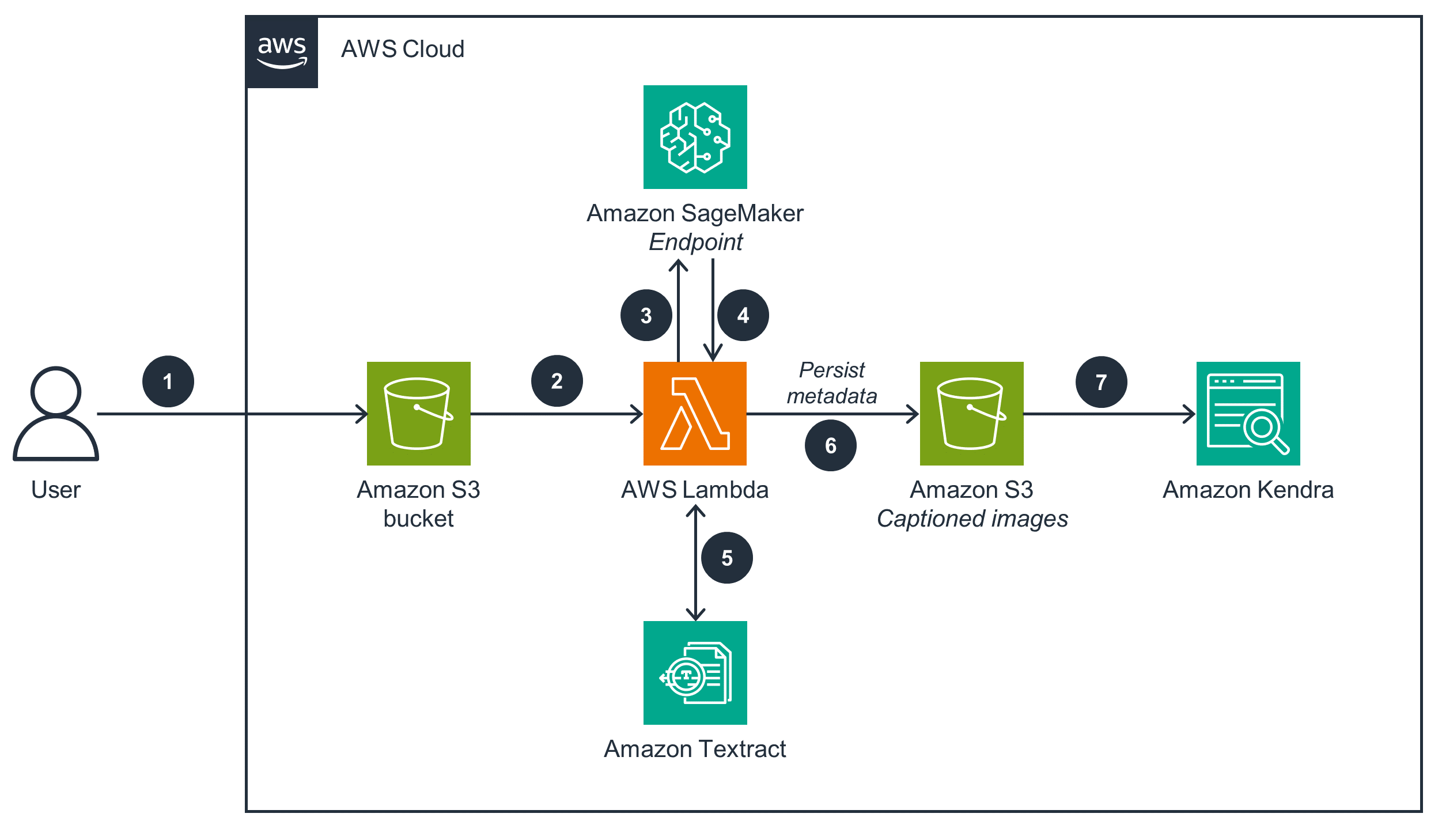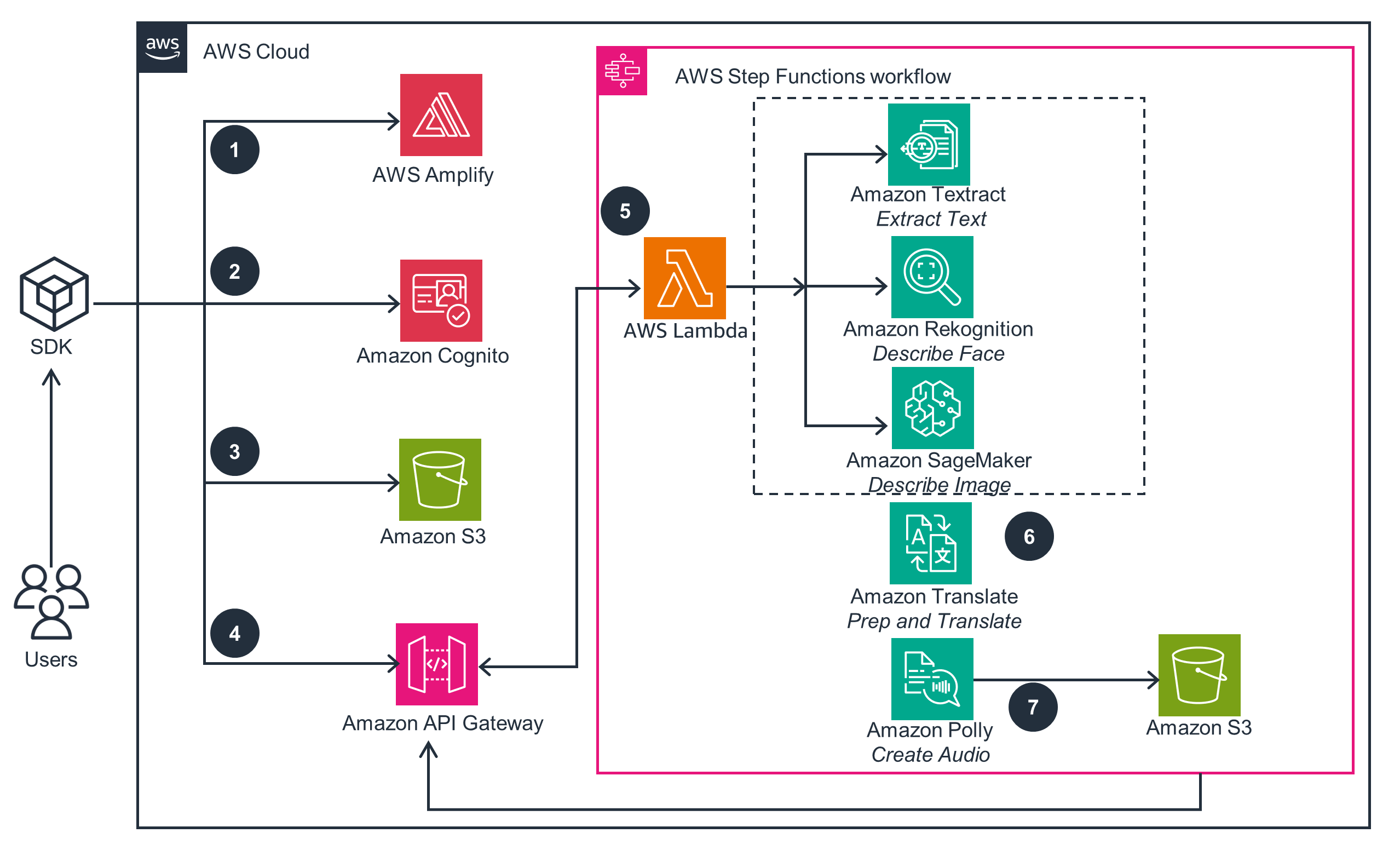- AWS Solutions Library›
- Guidance for Image-to-Text and Image-to-Speech on AWS
Guidance for Image-to-Text and Image-to-Speech on AWS
Overview
How it works
How it works

How it works

Well-Architected Pillars
The architecture diagram above is an example of a Solution created with Well-Architected best practices in mind. To be fully Well-Architected, you should follow as many Well-Architected best practices as possible.
This Guidance uses AWS services like Lambda and Step Functions to automate tasks, reducing manual work and errors, and Amazon S3 to provide reliable data storage. These services easily adapt to changing workloads and support efficient, consistent operations. Additionally, you can use Amazon CloudWatch to monitor operations and gain insights.
Read the Operational Excellence whitepaperThis Guidance uses Lambda and Step Functions to automate security-related tasks, reducing the risk of human error in security processes. Additionally, API Gateway enforces secure management of API endpoints, Amazon Cognito enhances user authentication and authorization processes, and AWS Identity and Access Management (IAM) controls access to AWS resources. Finally, CloudWatch helps detect security incidents or anomalous activities in real time, facilitating swift incident responses and threat mitigation.
Read the Security whitepaperThis Guidance uses automation through Lambda and Step Functions to reduce the risk of human errors that might compromise reliability. Additionally, Amazon S3 provides data replication and redundancy features that increase data reliability, and API Gateway grants users consistent and secure access to APIs to maintain workload reliability. CloudWatch monitors operations, aiding in issue detection and resolution. This proactive approach enhances workload reliability by minimizing downtime and disruptions.
Read the Reliability whitepaperThis Guidance reduces latency and resource inefficiency by using Lambda and Step Functions to automate processes and streamline workflows. Additionally, SageMaker and Amazon Polly facilitate real-time content generation, supporting faster and more efficient workloads, and API Gateway optimizes API management, delivering low latency and consistent access to promote high performance efficiency.
Read the Performance Efficiency whitepaperThis Guidance minimizes operational expenses by using Lambda and Step Functions to facilitate efficient resource use and reduce the need for constant manual intervention, minimizing human error and resource waste. Additionally, Amazon Polly reduces the need for costly manual content creation, API Gateway optimizes API management, decreasing compute-related costs, and Amazon Kendra improves search efficiency, reducing the time and resources spent on information retrieval. Finally, Amazon S3 offers scalable and cost-effective storage solutions so that you can store and access data efficiently without incurring unnecessary expenses.
Read the Cost Optimization whitepaperThis Guidance uses serverless services like Lambda and API Gateway for their energy efficiency, their efficient use of resources, and their incorporation of renewable energy sources. These practices align with sustainability goals, helping you reduce your carbon footprint.
Read the Sustainability whitepaperDisclaimer
Did you find what you were looking for today?
Let us know so we can improve the quality of the content on our pages